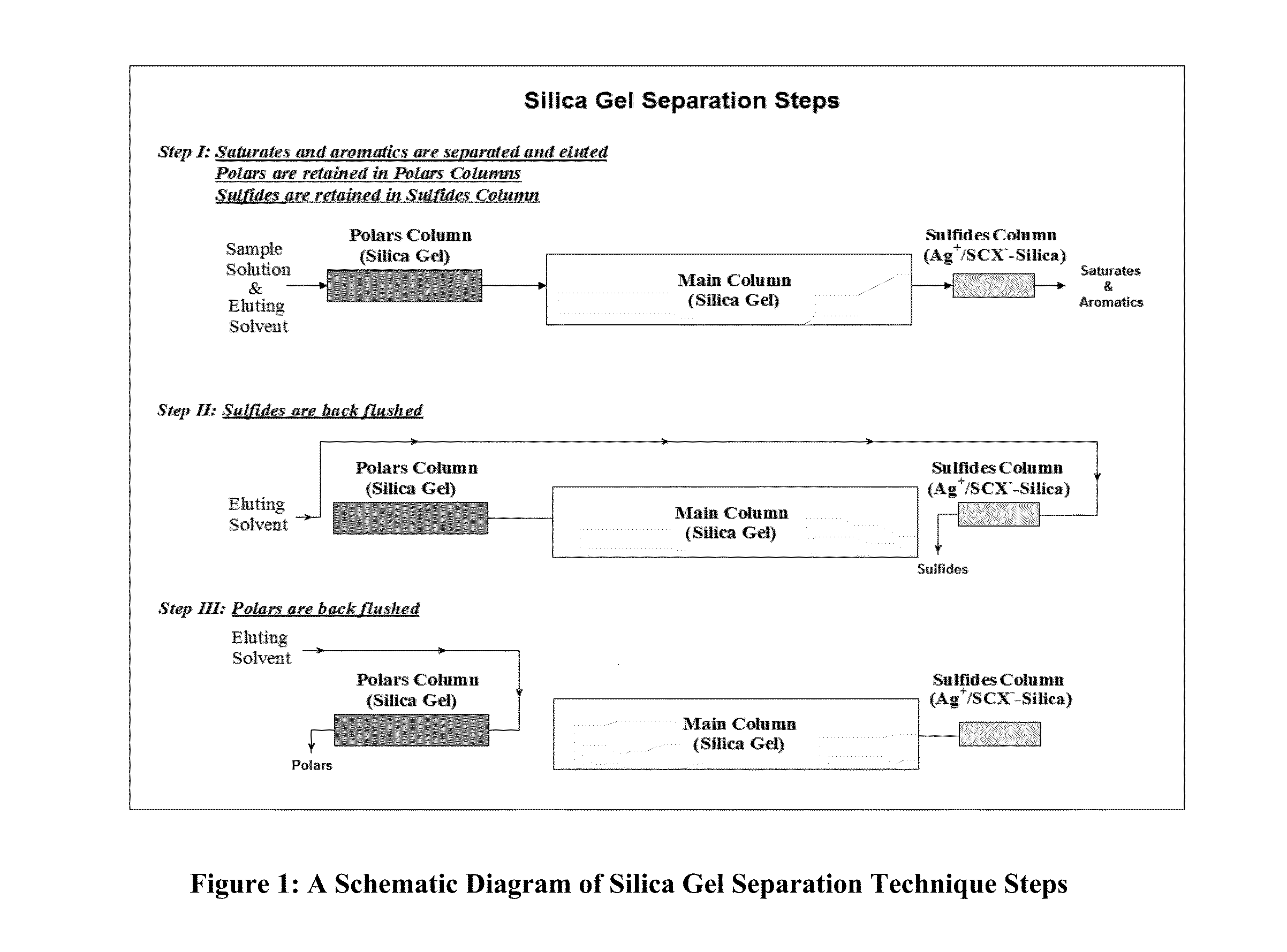Fractionation of de-asphalted oil of vacuum resid using preparative high performance liquid chromatographic separations
a technology of vacuum resid and separation, which is applied in the direction of amphoteric ion exchangers, chemical/physical processes, water/sewage treatment by ion exchange, etc., can solve the problems of difficult separation, achieve different adsorption characteristics of dao molecules, reduce the size of molecules, and reduce the solubility
- Summary
- Abstract
- Description
- Claims
- Application Information
AI Technical Summary
Benefits of technology
Problems solved by technology
Method used
Image
Examples
example 1
ARC Separation Method Optimization
[0049]Once the SGS technique was optimized, the low temperature ARC separation system was tested to see if 100% of DAO aromatics can be eluted at sub-ambient temperature of −40° C. At the very first attempt, it was observed that the DAO aromatics would not dissolve in n-heptane, a non-polar solvent. Also, the next common non-polar solvent, cyclohexane, used in most liquid chromatographic separations, could not be used at −40° because of its relatively high freezing point (4° C.). Therefore, it was decided to use toluene—a relatively less polar and a good dissolving solvent which could be used at sub-ambient temperatures. It was then optimized the eluting solvent / solvent-mixture volume and polarity in order to recover all of the aromatics. Given FIG. 3 are the ARC separation chromatograms of aromatics of the four DAOs used during optimizing the HPLC separation techniques.
[0050]It was observed that the ARC separations for the four DAO aromatics are ve...
example 2
[0054]Once the ARC technique was optimized, the four aromatic fractions (from the SGS) of compositionally diverse DAOs (Samples E to H—see Table 5) were further fractionated in to ARC-1, ARC-2, ARC-3, and ARC-4+ fractions. The ARC separation data is given in the data Table 7. As shown by the data, there are large variations in ARC-1 and ARC-4+ fractions for the four aromatic fractions. However, there are relatively low variations in ARC-2 and ARC-3 fractions. Variations in total mass recoveries were also greater than that of experimental / method errors.
[0055]
TABLE 7Mass Recovery Aromatic Ring Class Separation Data for fourcompositionally Different DAOs' AromaticsWt % (Normalized for Fractions)Actual TotalARC-1ARC-2ARC-3ARC-4+RecoverySample E2.310.326.550.689.6Sample F5.913.226.949.495.3Sample G14.214.632.341.1102.2Sample H14.416.230.132.993.7
PUM
| Property | Measurement | Unit |
|---|---|---|
| temperature | aaaaa | aaaaa |
| temperature | aaaaa | aaaaa |
| temperatures | aaaaa | aaaaa |
Abstract
Description
Claims
Application Information
 Login to View More
Login to View More - R&D
- Intellectual Property
- Life Sciences
- Materials
- Tech Scout
- Unparalleled Data Quality
- Higher Quality Content
- 60% Fewer Hallucinations
Browse by: Latest US Patents, China's latest patents, Technical Efficacy Thesaurus, Application Domain, Technology Topic, Popular Technical Reports.
© 2025 PatSnap. All rights reserved.Legal|Privacy policy|Modern Slavery Act Transparency Statement|Sitemap|About US| Contact US: help@patsnap.com



